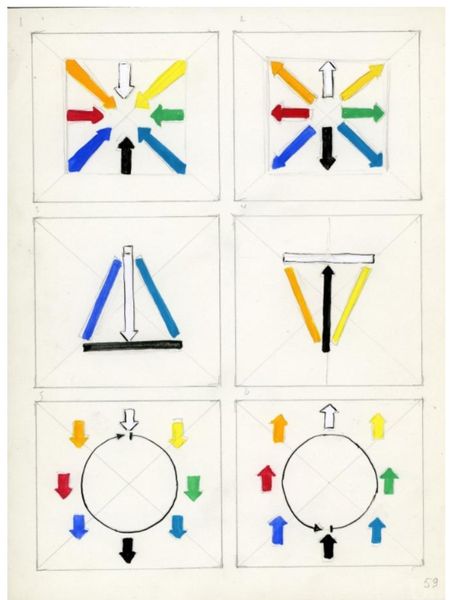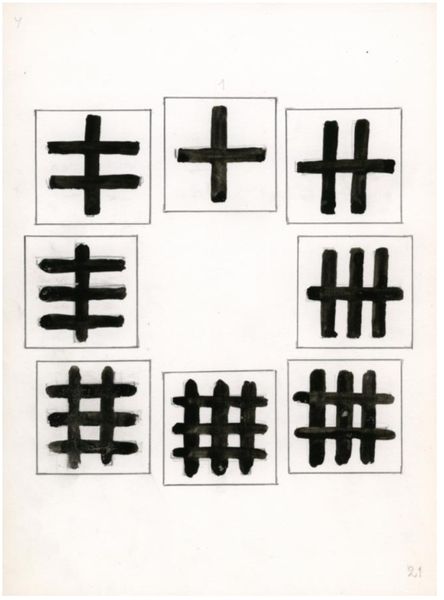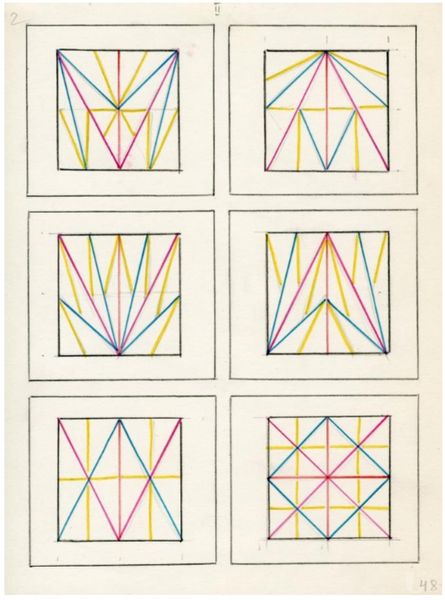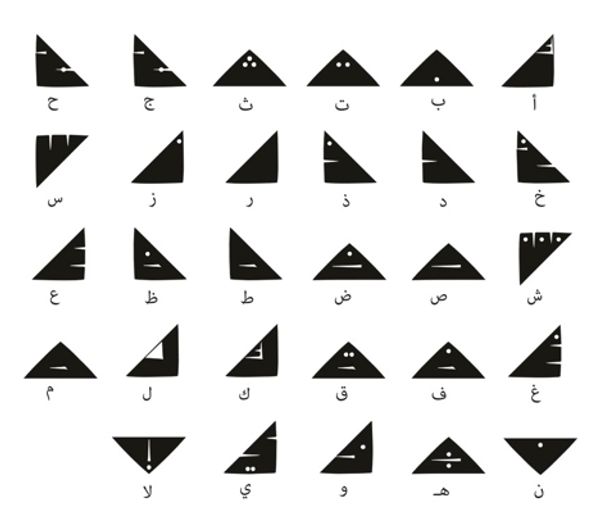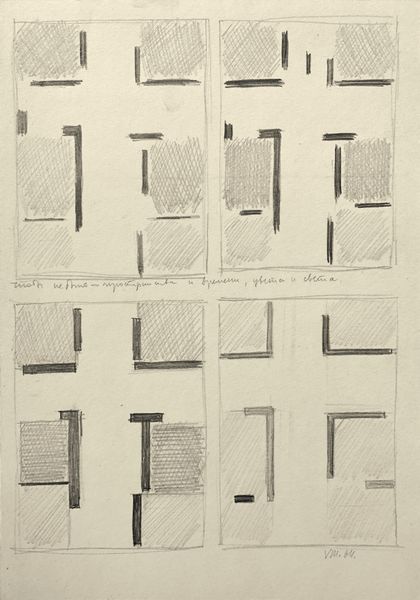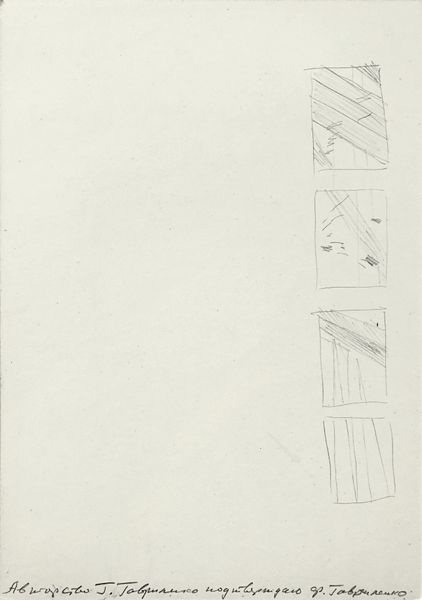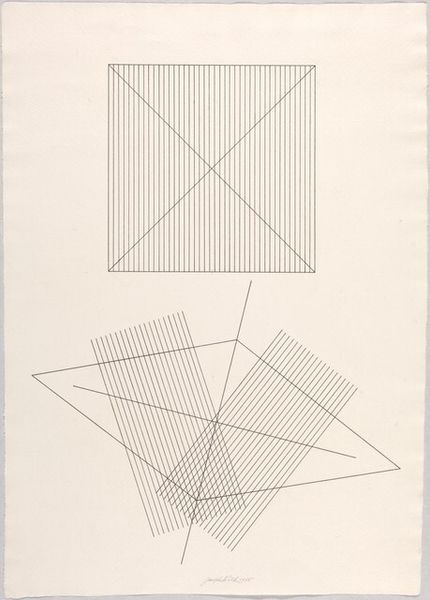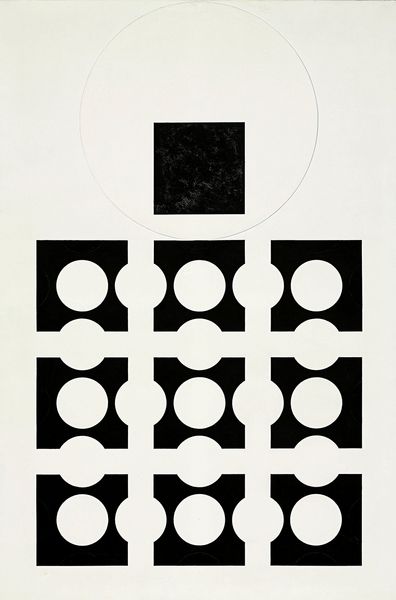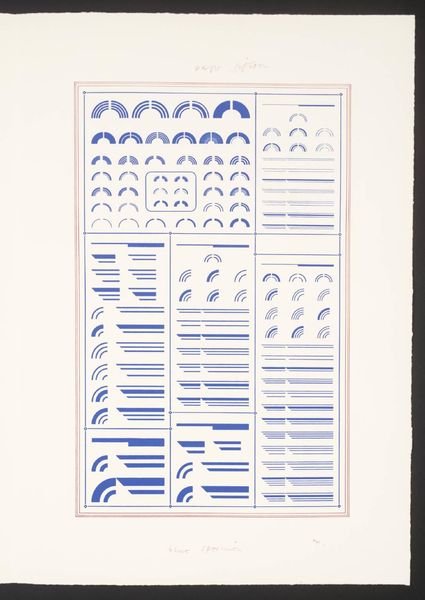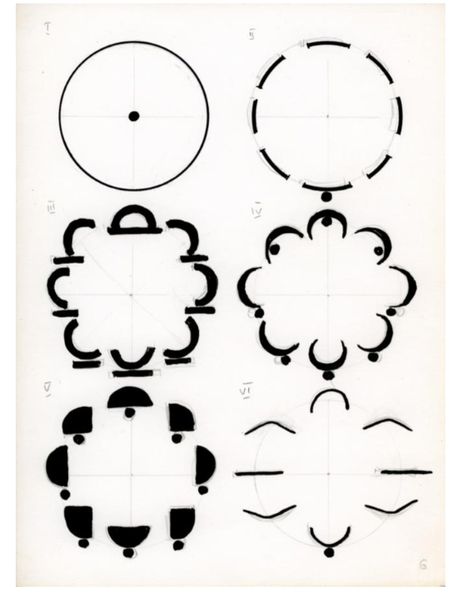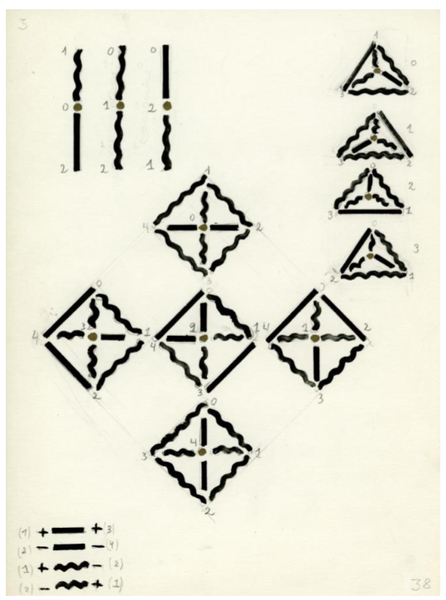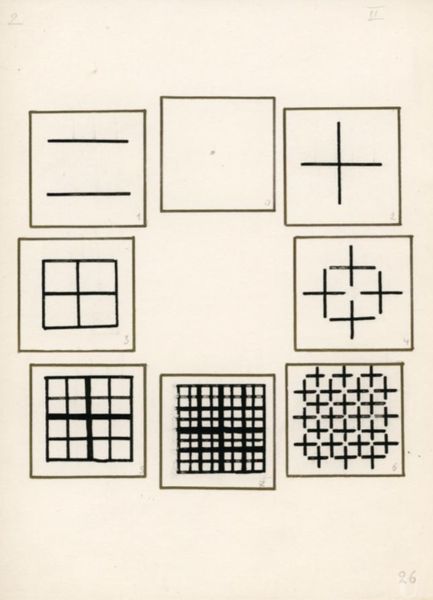
drawing, paper
#
drawing
#
hand written
#
script typography
#
conceptual-art
#
hand-lettering
#
old engraving style
#
hand drawn type
#
hand lettering
#
paper
#
hand-drawn typeface
#
fading type
#
geometric
#
stylized text
#
abstraction
#
line
#
small lettering
Copyright: Valerii Lamakh,Fair Use
Curator: This is Valerii Lamakh's, *The Fourth 'Book of Schemes'. Album #1, the Third Folder* created in 1978, a drawing on paper. What strikes you first? Editor: Stark simplicity. There’s a sense of coded communication here. Like an alien language primer, a series of minimalist symbols arranged on a grid. I’m also struck by the very visible marks of its production on a humble piece of paper. Curator: Indeed. Lamakh’s practice was deeply rooted in the Ukrainian context, often exploring themes of language, control and ideology through semiotic systems. What kind of labour underpinned it? Where does it fit, say, between illustration, pure math or concrete poetry? Editor: Interesting. The "Book of Schemes" framing, the album title - it all suggests a bureaucratic institutional origin, even as the medium is deeply personal, hand-drawn. And is it coincidence that these rows also resemble music notation in some abstract form? Curator: Perhaps not. Considering the period, late Soviet Union, one can see these "schemes" as visual critiques, ways of subtly subverting the rigid systems of power through playful abstraction. Look at the slight imperfections in the lines, the uneven spacing. Editor: And how subversive would that actually be within the existing network of power? Who sees it? Is it purely a personal act, or designed to trigger critique and further creation by others? Where did the materials originate? The pen, ink, the paper itself. Curator: The intimacy of the drawing allows it to circumvent larger established modes of critique. Think samizdat culture: hidden networks of dissemination outside formal publication routes, influencing a closer artistic network instead of seeking mass public appraisal. The limited means also mirrors artistic life for many during that period. Editor: So the conceptual art gesture of this piece gains potency from its inherent constraints and material limitations. Knowing its probable context deepens the understanding and transforms our experience. I see it completely differently now. Curator: Exactly! We've revealed a glimpse into the intersection of art, material scarcity, and quiet cultural resistance. Editor: A small work on paper carries echoes of a larger socio-political theatre, its story enriched by the very paper on which it's sketched.
Comments
No comments
Be the first to comment and join the conversation on the ultimate creative platform.
